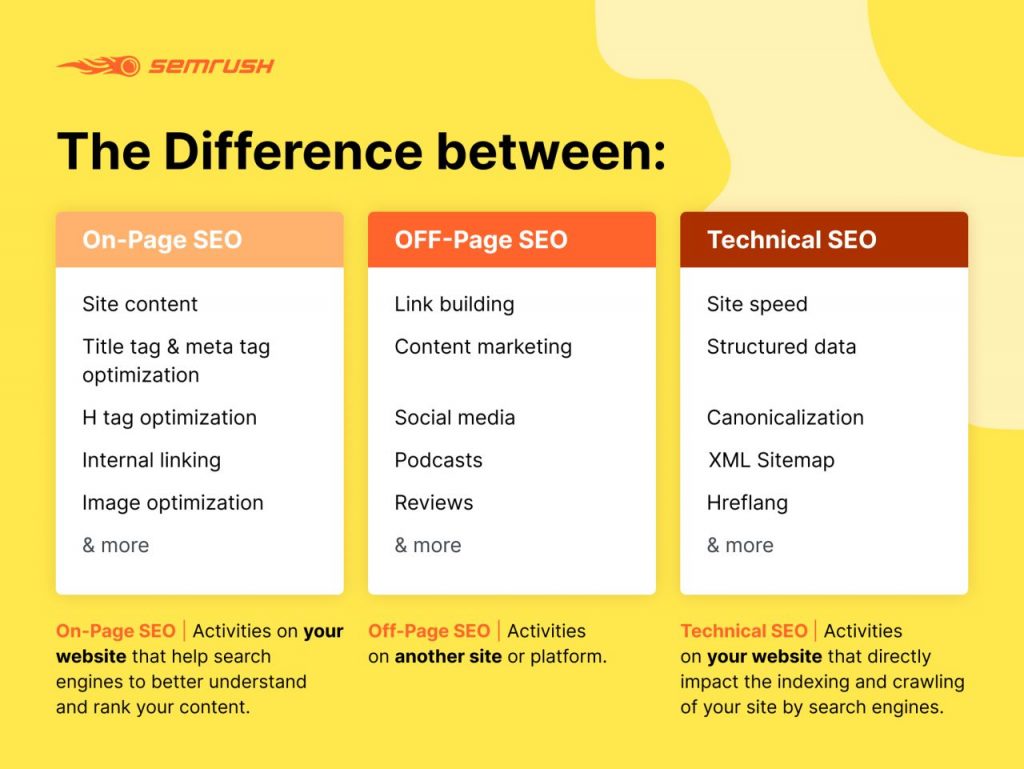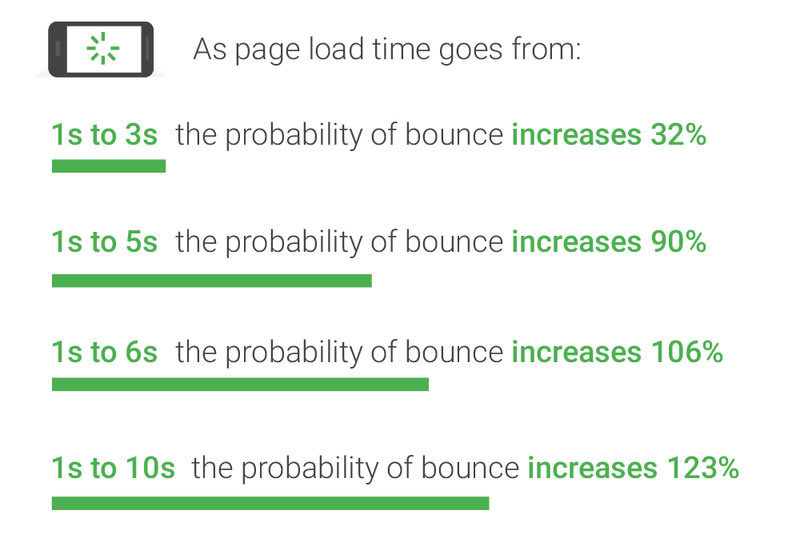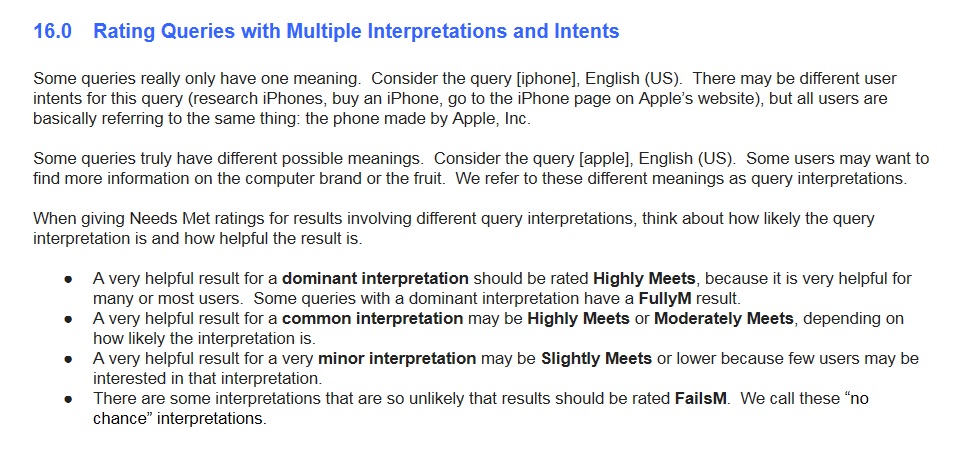Should you engage in Search Engine Optimization (SEO) on a new website, you’re likely well aware of how hard it really is. At its basic level, it might sound simple enough; optimize your content, provide relevant information, and have reputable websites link back to it. However, SEO is far from just that. It’s an extremely broad field, which often relies on trial-and-error since Google’s ranking factors are less than fully transparent. So, you’ll need to work smarter, not harder – prioritize, allocate your resources wisely, and inform your content strategies accordingly. To help you do just that, let us explore the most important Google ranking factors that deserve your attention.
Table of Contents
An overview of Google ranking factors
To illustrate the exact depth of this subject, let us briefly glance over all the known Google ranking factors. Backlinko finds there are over 200 distinct ranking factors, which span across:
- Domain Factors
- Page-Level Factors
- Site-Level Factors
- Backlink Factors
- User Interaction
- Special Google Algorithm Rules
- Brand Signals
- On-Site Webspam Factors
- Off-Site Webspam Factors
SEO reflects this complexity, by seeing divisions into different subsets with different areas of focus. The primary SEO types are:
- On-page SEO; on-page elements, such as image optimizations and content formatting
- Off-page SEO; off-page practices, such as backlinks
- Technical SEO; factors related to website technical health, such as sitemaps and robots.txt
SEMrush visualizes the difference between the 3 subsets as follows:
Finally, there’s local SEO; a unique SEO subset with a topical focus, hinging on Google My Business (GMB) marketing.
Luckily, such Content Management Systems (CMSs) as WordPress can help you through their inherent SEO assets. Still, that’s way too much of a burden to take up from the get-go, especially for the uninitiated. But fear not; you may start with the following 5 Google ranking factors and slowly expand at your own pace.
The most important Google ranking factors
So, which are these factors? In no particular order of importance, our picks for the top 5 are the following.
#1 Backlinks
Backlinks are the proverbial backbone of SEO, as Link Department rightfully asserts. Not only are they undeniably one of the most important Google ranking factors, but they also carry substantial benefits:
- Referral traffic; whether Follow or NoFollow, all backlinks produce referral traffic. Thus, they can considerably enhance your lead acquisition efforts.
- Engaged visitors; moreover, backlinks typically attract visitors who are already invested in your field and industry. That makes your conversion efforts more likely to succeed.
- Page Authority (PA); finally, Follow links specifically serve to boost your PA, in turn boosting your E-A-T score – as we’ll cover below. But even outside of SEO, backlinks serve as effective endorsements, making visitors more likely to trust you.
Still, to harness their power as regards SEO specifically, you must keep the following in mind:
- Follow links are extremely valuable. As mentioned above, Follow links directly boost your PA. Thus, you should focus your link-building efforts on acquiring Follow links by industry leaders and reputable websites.
- All backlinks matter, but some backlinks are bad. That said, all backlinks produce traffic. Still, backlinks by shady and untrustworthy websites can harm your PA, and thus your SEO. Use backlink audit tools to weed out and disavow such backlinks.
- Keep a healthy backlink balance. Finally, remember to keep a healthy balance between Follow and NoFollow backlinks as you expand your business. If you lean too heavily on either, Google may perceive your profile as unnatural and penalize you.
#2 Mobile-friendliness
Another extremely crucial Google ranking factor is mobile-friendliness. Over half of all web traffic comes from mobile devices, according to Statista, and Google knows this well. In fact, it indexes mobile versions of websites first and has done so since 2018.
So how can you ensure mobile friendliness? You may begin with the following:
- Opt for drop-down header menus. Navigation on mobile devices can be harder due to less screen real estate, so drop-down menus help alleviate this.
- Adopt a mobile-first design philosophy. Doing so will help ensure design simplicity, tighter content hierarchies, and a closer focus on responsiveness. Notably, this is at the center of Google’s Web Core Vitals.
- Keep your pages fast and bloat-free. Finally, this is such a significant factor it is its own Google ranking factor. Your page loading speed directly informs mobile friendliness, as well as your website’s overall User Experience (UX).
What’s more, SEO aside, slow loading speeds can cost you traffic and revenue. That’s because slower speeds directly correlate to higher bounce rates, according to Google/SOASTA research:
#3 Content length, depth, and freshness
Bill Gates famously asserted in 1996 that “content is king”. Far from a catchy one-liner, this SEO truism holds immense power today. In this regard, there are 3 main content factors to focus on; length, depth, and freshness.
- Content length. Initially, content length is a primary indicator of quality, as length gives you room to explore a subject thoroughly. Here, SEO practitioners typically suggest a minimum of 1,000-2,500 words per page or blog post. Of course, such content as ultimate guides may expand to 10,000 words or even more.
- Content depth. Then comes content depth – or quality, some would argue. Depth is a bit subjective and harder to define, but it essentially boils down to a few key factors; information accuracy, relevant citations, and relevant visual elements. How can you gauge content depth? Simple – audience engagement.
- Content freshness. Finally, content freshness is an equally crucial Google ranking factor. Evergreen content does also hold value, but Google promotes fresh content; consider yearly listicles, for example. Here, an excellent practice is to update old content into relevance, retrofitting it with new, accurate information.
#4 Search intent
Another notable Google ranking factor is search intent. Put differently, it’s how closely your content matches the visitor’s search intent. To put this into perspective, Google’s search quality evaluator guidelines specifically cover query interpretations and differing intents.
Here, you may initially analyze your audiences’ behavior through Google Analytics and such on-site tools like heat maps. Then, to inform your content strategy to better align it with user search intent, you may examine Google search results under the lens Ahrefs calls the “4 c’s”:
- Content style. Not to be confused with “content-type”, this regards the style of content that ranks best for a query. Is it a page or a video? Perhaps it’s an infographic. Identify the content style that matches your audiences’ intent and try to produce it.
- Content-type. In contrast, “content-type” refers to page types; blog posts, product pages, category pages, and landing pages. Here, you may examine which of these types ranks best. From there, you can extrapolate exactly what audiences are looking to find.
- Content format. “Format” also refers to content style, albeit in a different sense. Are how-to pages and tutorials ranking better, or are opinion pieces doing better? This factor, too, is crucial to matching user search intent.
- Content angle. Finally, “content angle” refers to the angle said content is approaching a subject. Is it for beginners? Then a brief overview would be best. Is it for seasoned professionals? Then a deeper dive might rank better.
#5 Website technical health
Finally, a crucial subset of Google ranking factors comes in your website’s technical health. These partly inform web development trends and are typically a joint effort between marketers and web developers.
Since this subset is also quite vast, let us cover the basics here for the sake of text economy. Among other factors like loading speed, consider the following fundamentals of technical health:
- Submit your XML sitemap to Google. This will help ensure crawlers index your pages faster, and prevent orphaned pages. On your end, this will also help you solidify your content structure and hierarchy, yielding a better UX for your human visitors.
- Use schema.org markup. This will also help inform Google of the type of content you’re producing and allow it to evaluate it properly.
- Make your choice between subdomain and subdirectory and stick to it. Either a subdomain (“blog.example.com”) or a subdirectory (“example.com/blog”) will work for Google, but consistency is key. Switching between the two will affect your rankings, and potentially cost you traffic and conversions.
For more information on subdomains and subdirectories, you may also refer to the following video by Google’s John Mueller.
https://www.youtube.com/watch?v=uJGDyAN9g-g
Conclusion
To summarize, there are multiple Google ranking factors to keep in mind – perhaps too many to address all at once. That said, the 5 aforementioned ones are among the most crucial ones to consider first. At their core, they all facilitate quality content, relevance, and a pleasant UX, which are the factors Google itself prioritizes.





















